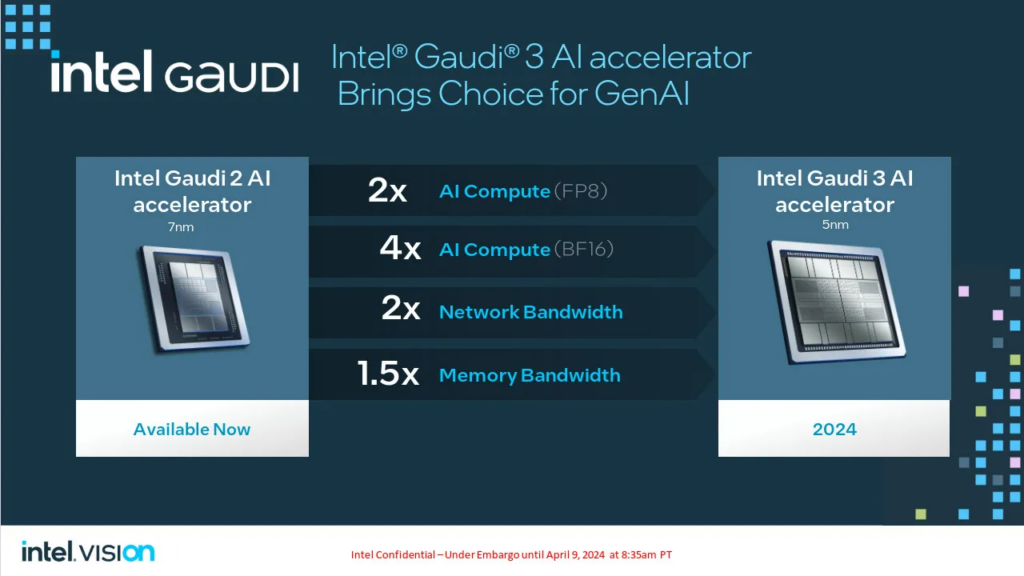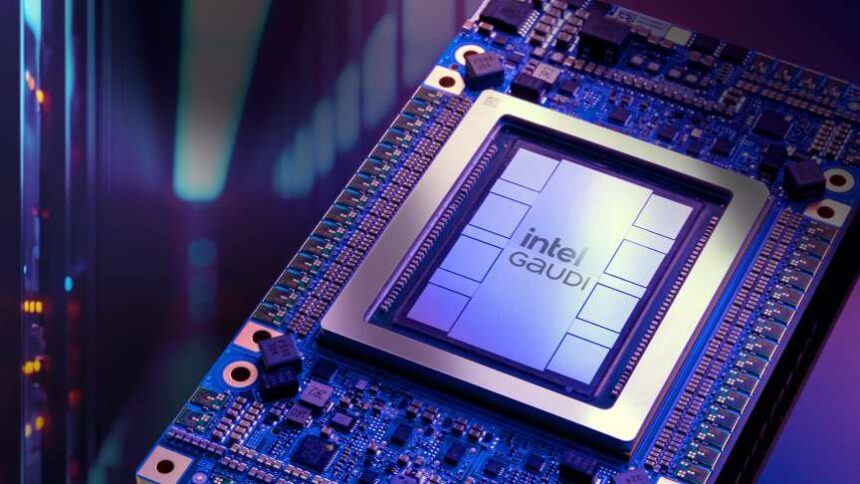Intel has launched a challenger in the AI accelerator market with its new Gaudi 3 chip. The Gaudi 3 aims to outperform Nvidia’s popular H100 model. Announced at Intel’s Vision 2024 event in Phoenix, the Gaudi 3 represents Intel’s leap forward in AI processing power particularly for large language models (LLMs) like those employed in ChatGPT.
A large language model is a language model notable for its ability to achieve general-purpose language generation and other natural language processing tasks. LLMs work by using a massive amount of text data to train a neural network. This neural network is then used to generate text, translate text, or perform other tasks. The more data that is used to train the neural network, the better and more accurate it will be at performing its task.
What’s Happening & Why This Matters
Intel’s Gaudi 3 is designed to deliver a 50% faster training time compared to Nvidia’s H100 using the same parameters for models like OpenAI’s GPT-3 175B and Meta’s Llama 2. With data centers struggling with H100 supply shortages, Intel’s new chip could provide a much-needed alternative that promises both high performance and improved availability.
- Enhanced Performance: Intel’s Gaudi 3 offers a 50% improvement in AI model training and inference times over Nvidia’s H100.
- Architectural Advances: The chip features two silicon dies connected by a high-bandwidth link, enhancing its AI compute capabilities.
- Cost-Effectiveness: While exact pricing is not disclosed, the cost-efficiency of Gaudi 3, coupled with its use of less expensive HBM2e memory, positions it as a competitive option in the market.
- Power Efficiency: Intel highlights a 40% greater inference power-efficiency for Gaudi 3, making it a greener choice for data centers.

As AI technology enhances, the demand for more powerful and efficient AI accelerators continues to grow. Intel’s move to introduce Gaudi 3 not only intensifies the competition with Nvidia but also aligns with broader industry needs for more advanced processing capabilities. The market’s response to Intel’s offering could reshape future trends in AI technology deployment, especially in high-demand sectors like machine learning and data processing.
TF Summary: What’s Next
Gaudi 3 sets the stage for a new era in AI accelerator technology. As Intel and Nvidia continue to push the boundaries of what’s possible, the real-world application and performance of these chips raises the bar higher and higher. With Intel’s next-generation Falcon Shores and Nvidia’s upcoming Blackwell chips coming soon, the AI chip market remains as dynamic and competitive as never before. Future developments will require enhancements to speed, processing efficiency, energy consumption and cost-effectiveness that ensures that the technological machinations of tomorrow are met.
_______________________________________________


